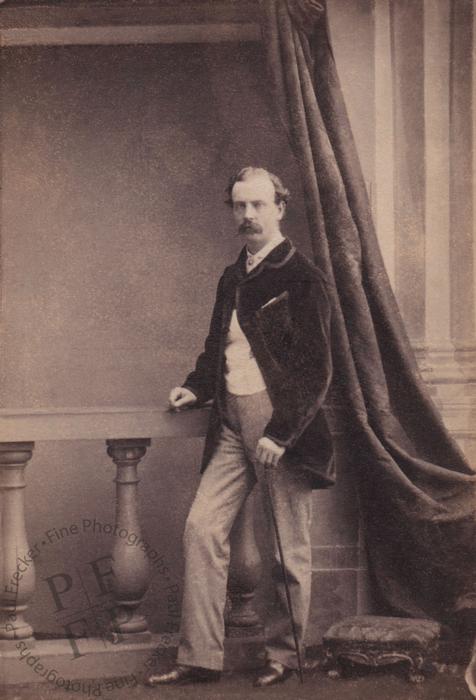Major Patrick Stewart
(1832-1865)
[The sitter is identified in the Silvy daybooks as 'Major Stuart' and by a pencilled inscription verso as 'Patrick Stewart.']
This is possibly Major Patrick Stewart (1832-1865) of the Royal Engineers, who died of fever at Constantinople on 15 January 1865. According to the announcement of his death in The Times (24 January 1865): 'The deceased officer was engaged in laying down the electric telegraph, overland, from Constantinople, through Persia and Afghanistan, to India. Only a few months ago he left Chatham in charge of a party of Royal Engineers selected to be employed for that operation. Unfortunately, the climate proved too trying, and the duties to be performed too laborious for his constitution, and he has succumbed at the early age of 32.'
According to his extensive obituary in the same newspaper two days later (26 January 1865): 'The death of such a gallant and distinguished officer as Lieutenant-Colonel Patrick Stewart, C.B., demands something more than the mere record of the event. Those who are well acquainted with recent Indian affairs know how great a career his early efforts promised, but the world at large can scarcely be expected to appreciate the loss which the service and his country have sustained, because his sun rose far away in India, and had not yet well rose before it set for ever.' The obituary mentions his 'scientific attainments' [...], his 'coolness, courage and zeal [...], 'his spirit of enterprise and energy' [...], and his 'devotion to duty, fearlessness, skill, and modesty.' It concludes: 'A keen sportsman, an indefatigable student, a naturalist, a soldier, unassuming and accomplished, genial and gentle, Patrick Stewart was a man to make and keep friends, and to make a name too, had he been spared, which would have made them prouder of his friendship.'

